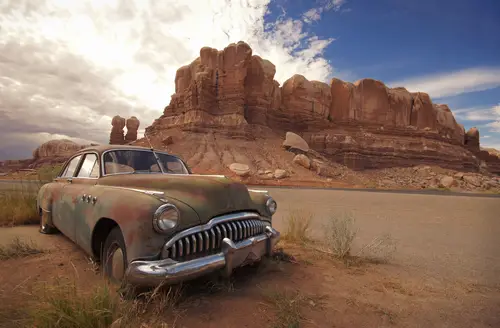Table of Contents
This post may contain affiliate links. As an Amazon Associate we earn from qualifying purchases.
The secret of a happy car isn’t always located where the engine is. A happy car is one that doesn’t show its age, or better said, its miles. Few people are actually aware of the fact that the cleaning products used make all the difference in the world. We’re going to talk about the friendliest car washing method around, for both your car and the environment.
Compare Your Car’s Paint Job with the Skin on Your Face
 First of all, both the skin on your face and the exterior surface of your car are heavily exposed to external factors, such as sun, dust, humidity, and pollution. Nevertheless the thing is that your car’s paint isn’t more resistant when continuously confronted with harmful factors, as some may believe. Our skin has the capacity to regenerate, while our car’s surface is constantly degrading. This is where you make the difference.
First of all, both the skin on your face and the exterior surface of your car are heavily exposed to external factors, such as sun, dust, humidity, and pollution. Nevertheless the thing is that your car’s paint isn’t more resistant when continuously confronted with harmful factors, as some may believe. Our skin has the capacity to regenerate, while our car’s surface is constantly degrading. This is where you make the difference.
I need not tell you that your car’s paint job is one of the most obvious features and expensive to replace and repair. Your taking the time to learn which products to use and when to use them, will add years to the life and luster of your car’s paint.
What Should You Use?
Under no circumstances should you use household cleaning agents like hand soap, dishwashing detergent, or glass cleaner on the paint. These aren’t formulated for use on a car’s paint and may strip off the protective wax.
Instead of getting the good old hose, your wife’s floor cleaning bucket and your child’s old t-shirts as cloths to get the job done, consider trying something else for a change: the waterless car wash method. It will leave your car shining for a long time.
And what’s also great about this method is that it will get you rid of the famous water stains you can always find after a wash. The bad thing about them is that they actually represent mineral deposits that etch the outline of a drop of water into your vehicle’s paint.
However most waterless car wash products are completely non-hazardous and water-based. Its basic waterless principle doesn’t involve stains not in a million years. You just have to pay a little attention when you buy them, to make sure you get the right ones, because they are not all the same.
Tips on how to Pick the Right Product
When buying your own waterless car-cleaning product, you must consider some of the following tips:
- Can the formula be used for both windows and paint?
- Is it water-based or petroleum-distillate based formula? (the latter isn’t really eco – friendly)
- Does the formula contain protective agents such as silicone emulsion, carnauba wax, Teflon or PEG?
- Are the bottles and sprayers 100% recyclable?
Using Waterless Car Wash Turns you Into a Little Captain Planet
There are 3 major methods of washing your car: the homemade one, using a hose, a bucket and tons of old t-shirts, it’s the commercial way, and it’s the waterless way.
The first uses between 80 and 140 gallons of water per wash, according to an International Car Wash Association’s research. The second uses 45 gallons of water per wash. But both methods require package disposals, energy consumption and chemical impact on the land, as the products used are not very well tolerated by the land.
As far as the third method is concerned, apart from the mandatory transportation of the substances, which happens for all washing methods, it uses only 4 to 6 oz. of waterless car wash formula per car.
In a nutshell, Waterless Car Washing has the smallest environmental impact. Moreover the savings in water, energy and chemicals significantly add up and make a huge difference considering the millions of cars that are being washed every day.

